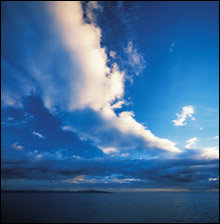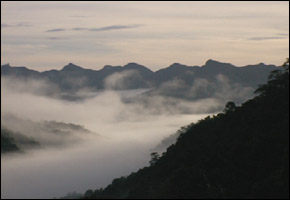 CLIMATE CLIMATE |
Fiji enjoys a tropical South Sea maritime climate
without great extremes of heat or cold. The islands
lie in an area, which is occasionally crossed
by tropical cyclones, mostly confined between
the months of November to April every year. On
the average some ten to twelve cyclones per decade
affect some parts of Fiji but only two or three
can be very severe. At all seasons the predominant
winds over Fiji are the Trade winds from the East
to Southeast. On the western and the eastern sides
of Viti Levu and Vanua Levu however, breezes blow
in across the coast. In general, the winds over
Fiji are light moderate, the most persistent being
in the period of July to December. Temperature
averages 22 Celsius from May to October while
from November to April temperatures are higher
with heavy downpours. Although rainfall is highly
variable, the average rainfall increases steadily
inland from coastal areas. It usually increases
between December to April, especially over the
larger islands, but form May to October it is
often deficient, particularly in the dry zone
on the western and the northern sides of the main
islands.
 |
 TROPICAL
CYCLONES TROPICAL
CYCLONES |
Tropical cyclones or hurricanes are most likely
to occur between November and April, the so-called
'hurricane season'. Cyclones originate from low-pressure
centres near the equator and travel to higher
latitudes, accelerating along a curving path.
Strong destructive cyclones are however, a fairly
rare phenomenon in Fiji. The country has been hit
by an average of 12 cyclones per decade, with two
or three of these being very severe. Of the 52 recorded
from 1940 to 1980, only 12 were considered severe.
On the other hand, in 1985, four cyclones hit Fiji
within four months including Eric and Nigel, which
caused deaths and millions of dollars worth of damage
to towns, agriculture and the tourism industry.
Cyclone Kina, early in 1993, caused severe flooding,
completely destroying the bridge over the Ba River
in the North-West of Viti Levu.
More recently, in 1997, Hurricane Gavin devastated
areas of the Yasawas and the Mamanucas. At the beginning
of the year 2003, Cyclone Amy hit Vanua Levu and
various areas of the Northeast were seriously damaged.

|

